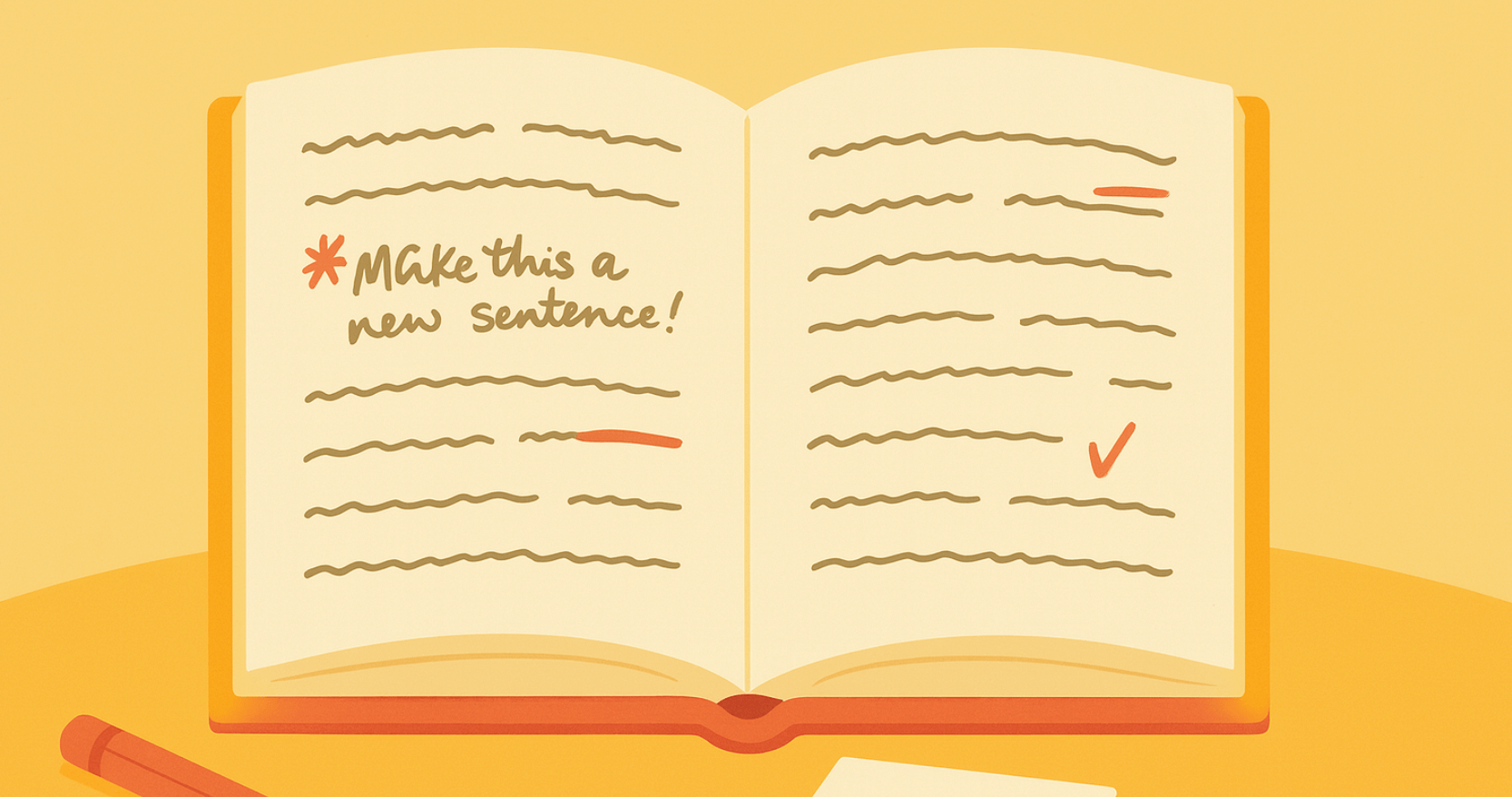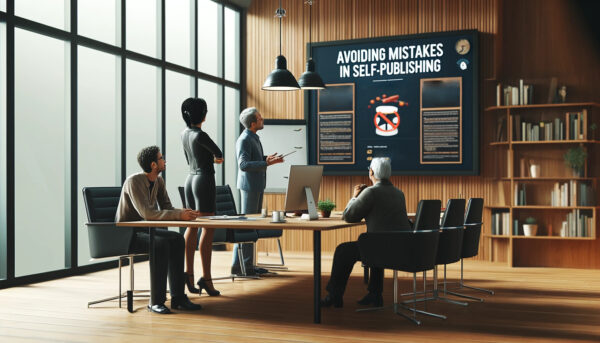Ever read something that looked fine at first glance… until a rogue comma, clunky sentence, or mysteriously misplaced “their/there/they’re” ruined the mood? That’s where copy editing swoops in, cape optional. Think of it as the behind-the-scenes superhero of writing, the one making sure your words not only make sense but also shine.
Copy editing is more than just nitpicking grammar rules (though, yes, commas are taken very seriously). It’s about polishing sentences, smoothing out tone, and ensuring your writing doesn’t accidentally trip over its own shoelaces. In this blog, we’ll explore what copy editing actually is, why it matters, and, because everyone asks, how it differs from proofreading. By the end, you’ll see why even the best writers need a trusty copy editor in their corner.
What Is Copy Editing?
Copy editing is the process of taking a finished draft and giving it the professional polish it needs before heading out into the world. If writing is like cooking, copy editing is the plating; it takes your hard work and makes it look irresistible.
At its core, copy editing ensures your writing is clear, consistent, and correct. It’s not about rewriting your ideas or changing your voice, it’s about making sure those ideas land with maximum impact. A copy editor’s checklist often includes:
- Fixing grammar, punctuation, and spelling issues
- Smoothing out clunky or confusing sentences
- Checking for consistency in tone, style, and formatting
- Ensuring facts, names, and references are accurate
- Spotting awkward repetitions or redundancies
In short, copy editing is like giving your words a spa day: the content is still yours, but it comes back refreshed, polished, and ready to impress.
Your Publishing Journey Awaits – Start NowWhy Copy Editing Matters
Imagine publishing a blog post, article, or even a whole book, only to realize later that a glaring typo is staring every reader in the face. Ouch. Copy editing exists to save you from that very nightmare.
Here’s why it’s worth its weight in red pens:
- Professionalism counts. Typos, grammar slips, and wobbly sentences can make even brilliant ideas look sloppy. Copy editing keeps your credibility intact.
- Consistency is king (or queen). Whether it’s spelling “email” or “e-mail,” a copy editor ensures you pick one and stick with it, because nothing screams amateur like style flip-flops.
- Clarity wins readers. Your argument might be airtight in your head, but if readers trip over tangled sentences, the message gets lost. Copy editing smooths the way.
- It saves money (and embarrassment). Mistakes in marketing copy, academic work, or a published book can be costly, not to mention mortifying.
In short, copy editing is the difference between words that simply exist on a page and words that work hard for you. It’s the polish that turns “good enough” into “can’t-put-it-down.”
What’s the Difference Between Proofreading and Copy Editing?
If copy editing and proofreading were siblings, copy editing would be the meticulous older one making sure everyone’s dressed appropriately, while proofreading would be the younger one giving a quick once-over before you walk out the door. Both are essential—but they don’t do the same job.
Copy Editing:
- Focuses on clarity, flow, and style.
- Fixes grammar, punctuation, and word choice.
- Checks for consistency in tone, formatting, and facts.
- May suggest rephrasing or restructuring sentences.
Proofreading:
- Catches typos, spelling slips, and missing words.
- Fixes punctuation errors and formatting glitches.
- Is the last step before publishing.
- Doesn’t dive into style or sentence flow.
Here’s a quick comparison:
| Task | Copy Editing | Proofreading |
| Grammar & punctuation | ✔ | ✔ |
| Style & tone consistency | ✔ | ✘ |
| Sentence clarity & flow | ✔ | ✘ |
| Typos & surface errors | ✔ | ✔ |
| Final pre-publication fix | ✘ | ✔ |
Bottom line: Copy editing digs deep to make your writing sharp and effective. Proofreading is the final polish that ensures no sneaky errors slip through.
Copy Editing in Writing with Real Examples
So what does copy editing actually look like in action? Let’s break it down with some quick examples.
Example 1: Blog Draft
- Before: Copyediting is a important tool for making writing better and more professional, it helps authors avoid mistakes.
- After: Copy editing is an important tool that makes writing sharper and more professional. It helps authors avoid mistakes.
See the difference? A copy editor fixed grammar, improved flow, and eliminated that awkward comma splice.
Example 2: Book Passage
- Before: The hero ran quickly down the dark alley, in the night it was very dark and he felt afraid of the shadows that loomed menacingly.
- After: The hero sprinted down the dark alley, shadows looming around him in the night. Fear tightened his chest.
Here, the copy editor cut redundancies (“dark” twice, “menacingly shadows”), varied word choice, and created tighter, more engaging sentences.
Example 3: Marketing Copy
- Before: Our product is the best because it is reliable, it is strong, and it is high-quality.
- After: Our product delivers strength, reliability, and quality you can trust.
Cleaner, more persuasive, and way less repetitive, that’s the power of copy editing.

Do You Need a Copy Editor?
Here’s the thing: even the sharpest writers benefit from a fresh set of eyes. If you’ve ever reread your own work a dozen times and still missed that one glaring typo, you already know why copy editors exist. But beyond catching errors, they’re your safety net for style, flow, and professionalism.
Signs you might need a copy editor:
- You know your ideas are solid, but your sentences feel clunky or unclear.
- Readers keep asking the dreaded question: “What did you mean by this?”
- Your writing bounces between casual and formal like it’s on a trampoline.
- You’ve proofread so many times that the words have lost all meaning.
Who typically hires copy editors?
- Authors: to prepare manuscripts for agents, publishers, or self-publishing.
- Businesses: to ensure marketing copy and reports look polished and credible.
- Students & academics: for clarity in theses, dissertations, and research.
- Bloggers & content creators: to stand out in crowded digital spaces.
Professional vs DIY copy editing:
- Tools like Grammarly or Hemingway can catch some issues, but they can’t always judge tone, style, or whether your joke actually makes sense.
- A professional copy editor brings human nuance, industry knowledge, and a critical eye that algorithms just can’t replicate.
Takeaway: If your words are meant to influence, persuade, or publish—yes, you probably need a copy editor.
The Bottom Line on Copy Editing
Copy editing isn’t just about fixing commas or policing grammar, it’s about helping your writing do its job. Whether you’re drafting a novel, polishing a blog, or putting together marketing copy, copy editing ensures your words are clear, consistent, and credible.
And remember: copy editing and proofreading aren’t rivals, they’re teammates. One refines the content, the other makes sure no sneaky typos survive the final round. Together, they give your writing the professional edge it deserves.So, the next time you finish a draft, ask yourself: Is this “good enough”… or is it copy edited? Your readers (and your reputation) will thank you.
Copy Editing FAQ
Q: What is copy editing in writing?
Copy editing in writing is the process of reviewing a draft to make sure it’s clear, consistent, and polished. It goes beyond just fixing typos, it improves sentence structure, grammar, punctuation, and overall readability. A copy editor ensures that the writer’s ideas are communicated smoothly without distracting errors or inconsistencies.
Q: What is the difference between proofreading and copy editing?
Copy editing is more in-depth than proofreading. A copy editor focuses on improving style, tone, clarity, and accuracy. They may rework sentences, eliminate redundancies, and check facts. Proofreading, on the other hand, is the last step before publishing. It’s about catching surface-level errors like typos, punctuation slips, or formatting issues. Both are important, but they happen at different stages.
Q: What does a copy editor do?
A copy editor acts like a quality control specialist for writing. They check grammar, punctuation, and spelling, but also make sure the style and tone are consistent throughout. Copy editors look for unclear phrasing, awkward flow, or inconsistencies that could confuse the reader. In some cases, they also fact-check names, dates, and references to keep the content accurate.
Q: Why is copy editing important?
Copy editing is essential because it helps writing look professional and trustworthy. Even small mistakes can distract readers and harm credibility. By smoothing out sentences, fixing errors, and aligning tone with the intended audience, copy editing ensures that the content is not only correct but also engaging and effective
Q: Can I edit my own writing?
You can certainly attempt to copy edit your own work, but it’s tough to spot every mistake in something you wrote yourself. Familiarity makes it easy to miss errors. Tools like Grammarly or Hemingway can help with basic issues, but a professional copy editor brings objectivity, experience, and a trained eye for detail that software simply can’t match.
Q: Do all writers need copy editing?
Yes, in most cases. From novelists to bloggers, academics to businesses, copy editing ensures that ideas are communicated clearly and professionally. Even skilled writers benefit from copy editing, because fresh eyes can catch mistakes or suggest improvements that the original writer may overlook.
Q: Is copy editing the same as line editing?
Not exactly. Line editing focuses heavily on style, word choice, and the rhythm of sentences, almost like fine-tuning the writer’s voice. Copy editing overlaps with some of these tasks but leans more toward correcting grammar, fixing inconsistencies, and improving readability. They complement each other but are distinct stages of the editing process.
Q: How does copy editing fit into the publishing process?
In the publishing world, copy editing comes after developmental editing (big-picture changes) and before proofreading. It’s the stage where a manuscript is polished and prepared for typesetting or formatting. Without copy editing, a book or article may still contain errors or awkward phrasing that could harm its reception once published.







